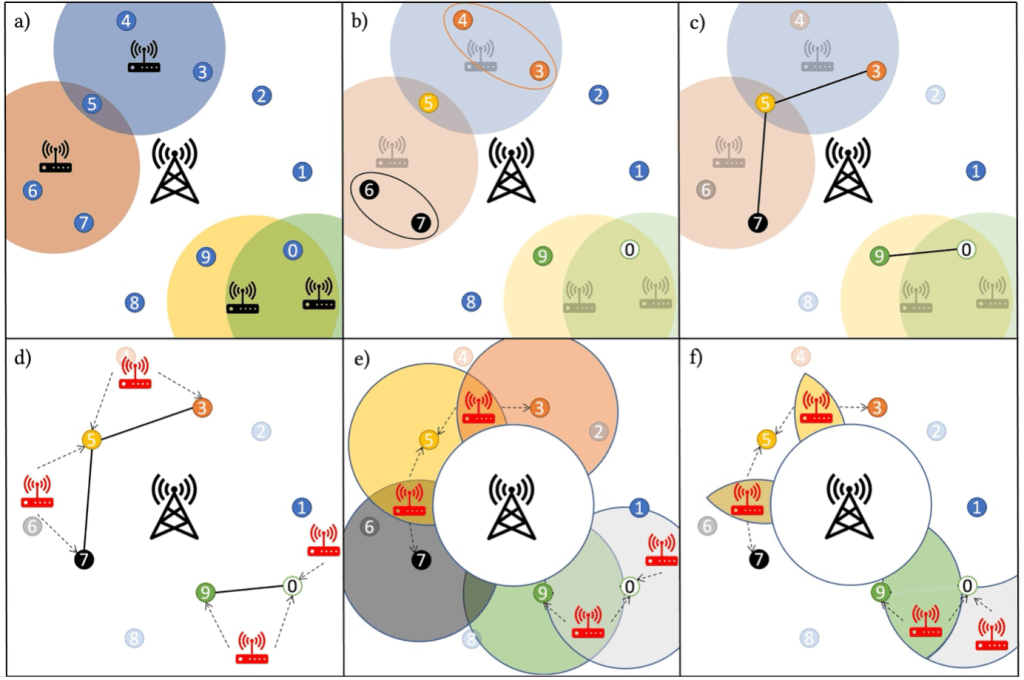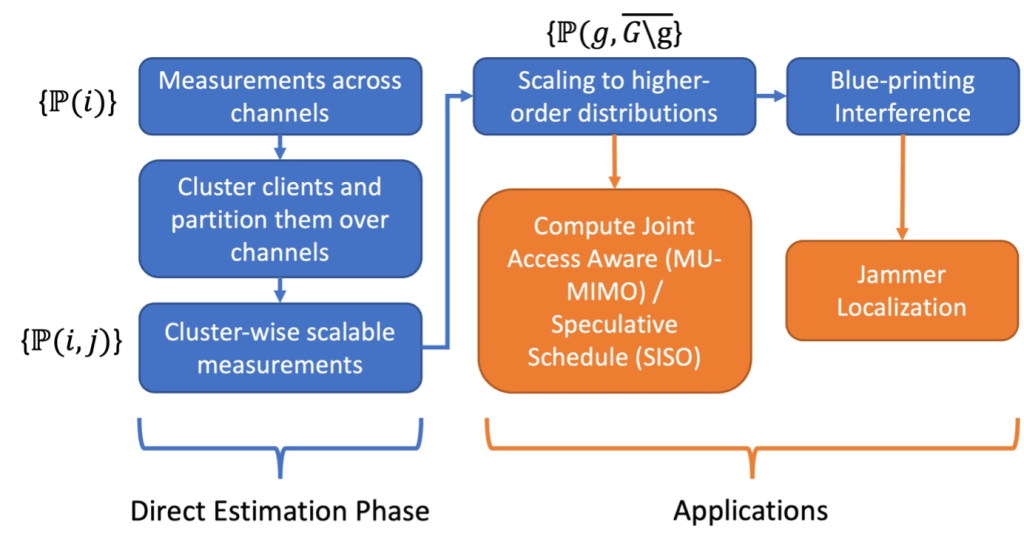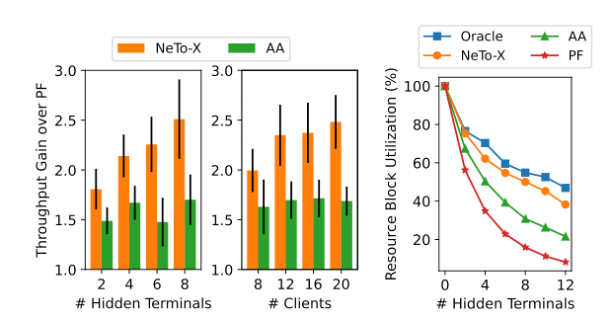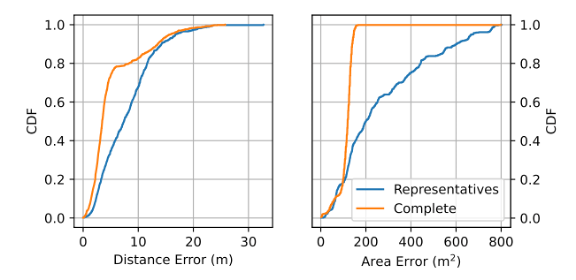The scale and density of mobile network deployments are increasing rapidly while spectrum remains a scarce resource. Mobile networks have strived to increase spectral efficiency through advanced multiplexing strategies (e.g. carrier aggregation, multi-user, and massive MIMO) that are coordinated by base stations (BS) in licensed spectrum. However, their inability to accurately assess the impact of external interference on clients, leads to significant performance degradation during dynamic (unlicensed) spectrum access (DSA).
We introduce the notion of network tomography for DSA, whereby clients are transformed into spectrum sensors, whose joint access statistics are measured by the BS and used to estimate as well as account for interfering sources. Albeit promising, performing such tomography naively incurs an impractical overhead that scales exponentially with the multiplexing order of the strategies deployed – which will only continue to grow with 5G and 6G technologies.

To this end, we propose a novel, scalable network tomography framework called NeTo-X that optimally estimates joint client access statistics with just linear overhead, and forms a blue-print of the interference conflicts enabling efficient DSA for future networks. NeTo-X’s design incorporates intelligent algorithms that leverage multi-channel diversity and the spatial locality of interference impact on clients to accurately estimate the desired interference statistics from just pair-wise measurements of its clients. The merits of its framework are showcased in the context of resource management and jammer localization applications, where its performance significantly outperforms baseline approaches and closely approximates optimal performance at a scalable overhead.

Key results:
Results for scheduling:

Results for Localization:

| Number of HTs | 2 | 3 | 4 | 5 | 6 |
| Accuracy (%) | 99.3 | 90.5 | 81.7 | 73.5 | 70.6 |
- A. Madnaik, N. C. Matson, K. Sundaresan, “Scalable Network Tomography for Dynamic Spectrum Access”, IEEE International Conference on Computer Communications (INFOCOM), May 2024.
